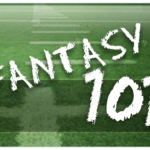Regardless of whether you’ve played fantasy baseball for years or if this will be your first season, there are numerous topics, strategies, and details that must be addressed before and during the season. This is the first of a three-part overview of what you need to organize a fantasy baseball league, construct your rosters, and – most importantly – win! Let’s get to it.
If you’re creating a league from scratch, there are several key decisions that you should be making RIGHT NOW.
First, how many owners will your league have? And will you stock your rosters from all the major leagues or just the American or National League?
Too few owners and too many players to choose from will give everyone an All-Star squad, which can take strategy, research and skill out of the equation. Too many owners drafting too few players can leave you picking from a bunch of backups, which no one wants to do.
If the number of owners is eight or less, you should stick to either the AL or NL. If you’re over eight, opening up the pool of players to all of MLB is fine.
—
Roster size plays an important role in the previous section, so this needs to be settled early. The typical roto roster has 23 players – two catchers, a first baseman, second baseman, third baseman, shortstop, corner infielder (1B/3B), middle infielder (2B/SS), five outfielders, nine pitchers, and a utility player (most often an additional hitter). You can trim down or add to this standard, but don’t go overboard in either direction.
Many leagues also have reserve squads in case of injury or ineffectiveness. The number of reserves usually ranges from five to 15. In general, the more owners you have playing, the fewer reserves you should have, since there will be less talent to choose from.
—
You’ll also need to determine what categories to use. Standard Rotisserie uses 4×4 – batting average, home runs, RBI, and steals for hitters; wins, ERA, saves, and WHIP (Walks plus Hits divided by Innings Pitched) for pitchers. The popularity of 5×5 leagues (adding runs scored for hitters and strikeouts for pitchers) has increased greatly over the last few years.
Other leagues assign positive or negative points for numerous categories – doubles, triples, steals, caught stealing, shutouts, hits allowed, etc. Some leagues go overboard by using too many categories. This approach makes putting together a good strategy almost impossible because there are too many factors to consider.
Besides, you’re more likely to get a good idea of player values from web sites (like GetSportsInfo.com) and magazines if you stick with 4×4 or 5×5 scoring. However, if you’re looking to be creative and unique, come up with a scoring system all your own. Just make sure you and your fellow owners understand and agree to it in advance.
—
To fill out your rosters, choose either a draft or an auction. If you draft, determine the order of selection randomly – picking names from a hat, for instance. And to be fair to the poor schmuck who picks last, you MUST use a snake draft, where the order of selection reverses every other round. For example, if you have a 10-team league, the owner who picks tenth also picks eleventh, and the person who picked first will make the 20th and 21st selections, etc.
If you go with an auction, make sure everyone can set aside plenty of time, because this could take several hours, especially if you’re starting a brand-new league.
You also must decide whether owners can keep players for subsequent years. If so, let everyone know how many players can be kept, for how many years, and at what price – the same as their draft price, or is their a premium added each season?
You also need to determine how much money (pretend or real) owners will have to fill out their rosters. The standard Rotisserie amount is $260, although this is very flexible. (Why $260? My best guess is that they chipped in $10 a week for a 26-week regular season.).
The money, of course, is crucial. Does the entry fee equal the amount you have available for the auction, or is it some other amount? Are there transaction fees for trades? Will teams have a free agent budget to acquire undrafted talent?
All these questions need to be answered so potential owners know how much it will cost to play. You have to find a financial level that’s comfortable for everyone, but also enough to make it worth playing for. Only you and your friends can make that decision.
And of course everyone wants to know what the payouts will be. How many places in the overall standings will get money at the end of the year? Usually the top third or so get prizes. Also, will you pay out for category or weekly leaders? This is a nice option since it gives everyone a chance to win some cash. And how will ties be broken? You can go with whoever wins the most categories, simply share the money equally, do “Rock, Paper, Scissors” – whatever you like. Just be sure to decide in advance. No one wants to being surprised to find out they’re getting less money that they thought.
—
Finally, you’ll have to determine how the stats will be tracked. In the old days one of the owners, usually the commissioner, kept track. It can be a difficult, time-consuming responsibility, which is why stat services have become so popular. Some services are free, while others charge a (sometimes hefty) fee. Yahoo! or somewhere else can do the job for no cost, but you may have to pay to get specific features you’re looking for.
—
Well, that’s all for Part One, covering everything you need to take care of before draft day.









